Climate Death Toll: Will A Warming World Overwhelm Human Resiliency?
/in Featured, Podcast Hubwonk /by Editorial Staff
This week on Hubwonk, host Joe Selvaggi talks with climate scientist and Johns Hopkins lecturer Dr. Patrick Brown about his recent paper, Human Deaths from Hot and Cold Temperatures and Implications for Climate Change, on the factors that contribute to high climate-related mortality, and those that lead to better resiliency.
Guest:
 Patrick T. Brown is a Ph.D. climate scientist. He is a Co-Director of the Climate and Energy Team at The Breakthrough Institute and is an adjunct faculty member (lecturer) in the Energy Policy and Climate Program at Johns Hopkins University. He holds a Ph.D. from Duke University in Earth and Climate Sciences, a Master’s degree from San Jose State University in Meteorology & Climate Science, and a Bachelor’s degree from the University of Wisconsin – Madison in Atmospheric and Oceanic Sciences. He has conducted research at the Carnegie Institution at Stanford University, NASA JPL at Caltech, NASA Langley in Virginia, NASA Goddard in Washington DC, and NOAA’s GFDL at Princeton University. He has published papers in Nature, PNAS, and Nature Climate Change, as well as many other journals, and has provided commentary for The New York Times, CNN, The BBC, The Washington Post, Newsweek, The Guardian, ABC News San Francisco and CBS News San Francisco among other places.
Patrick T. Brown is a Ph.D. climate scientist. He is a Co-Director of the Climate and Energy Team at The Breakthrough Institute and is an adjunct faculty member (lecturer) in the Energy Policy and Climate Program at Johns Hopkins University. He holds a Ph.D. from Duke University in Earth and Climate Sciences, a Master’s degree from San Jose State University in Meteorology & Climate Science, and a Bachelor’s degree from the University of Wisconsin – Madison in Atmospheric and Oceanic Sciences. He has conducted research at the Carnegie Institution at Stanford University, NASA JPL at Caltech, NASA Langley in Virginia, NASA Goddard in Washington DC, and NOAA’s GFDL at Princeton University. He has published papers in Nature, PNAS, and Nature Climate Change, as well as many other journals, and has provided commentary for The New York Times, CNN, The BBC, The Washington Post, Newsweek, The Guardian, ABC News San Francisco and CBS News San Francisco among other places.
Get new episodes of Hubwonk in your inbox!
WATCH:
Read a transcript of this episode:
Please excuse typos.
Joe Selvaggi:
This is Hubwonk. I’m Joe Selvaggi.
Joe Selvaggi:
Welcome to Hubwonk, a podcast of Pioneer Institute, a think tank in Boston, climate change is the biggest health threat facing humanity. That is according to the World Health Organization, whose Global health Pavilion featured prominently at last week’s un top 27 climate conference in Egypt. Indeed, scientists estimate that nearly 10% of all global human deaths are climate related, but claims that a warming planet will cause an increase in climate related deaths must contend with the reality that in the past century of warming, climate related deaths have decreased substantially, and that colder temperatures currently cause nearly 10 times as many climate related deaths as do warmer temperatures. If we should understand the threat of global warming as primarily a threat to human health and mortality, the public must better understand who are at risk of climate related deaths, what factors contribute to their vulnerability, and what conditions actually improve climate related health and resiliency. My guest today is climate scientist and Johns Hopkins lecturer, Dr. Patrick Brown. Professor Brown is co-director of the Climate and Energy team at the Breakthrough Institute, where he has written extensively on the effects of climate on global public health. Professor Brown will share with us the observations of his recent paper, human deaths from hot and cold temperatures and implications for climate change, and offer his insight into policy choices that reduce climate related deaths in a warming world. When I return, I’ll be joined by climate scientist, Dr. Patrick Brown.
Joe Selvaggi:
Okay, we’re back. This is Hubwonk. I’m Joe Selvaggi, and I’m now pleased to be joined by co-director of the Climate and Energy team at the Breakthrough Institute, Johns Hopkins. Professor Patrick Brown. Welcome to Hub Won Patrick. Thank you for having me. Well climate change is returned to everyone’s top of mind. For a couple reasons. We’ve just had the recent COP 27 meeting in Egypt, and also here in Boston for Wests Worth. And I’m not sure if you’re aware, we’ve had a royal visit to celebrate the so-called Moonshot awards for those doing pioneering work in climate change mitigation. It’s being given away by our future king of England, prince William. So it’s top of mind for everyone. We’re gonna talk about some of the, the work you’ve done on climate recently, but I want to give our listeners who don’t know you a little bit of background on where you are. How did you come to become a academic and scientist in this field of climate?
Patrick Brown:
Well, I guess it probably started when I was seven or eight years old, and I got just kind of really into the weather. And so I’m, I’m from Minnesota, and so we had, you know, we have all of the kinds of weather, we have all the seasons, and I was really interested in, in tornadoes and severe weather and used all of my, you know, birthday money to buy instruments. And I had a, a voicemail forecast and a newsletter and things like that. And so when it came to going to undergrad, I only applied to, to universities that had atmospheric science or meteorology as a major. And I ended up going to University of Wisconsin. I worked for a little bit as a meteorologist after that. And then I decided I wanted to go to grad school, and I ended up I wasn’t sure if I wanted to get a PhD yet, so I ended up at a master’s program at San Jose State University, and that’s where I got kind of more into the climate side of things.
Patrick Brown:
We were doing climate model evaluation then I went on, I went on from there to go to Duke University to get a PhD in basically climate science. And I, my PhD was on global average temperature variability. And, and you know, how, how we can separate forced changes that are due to human activity from natural unforced variability. Then I did a, a postdoc at Stanford University where I got into more of broadly human environment interaction and, and economic models of climate change and climate change mitigation. And then I was a professor back at San Jose State University where I got my master’s where I taught meteorology and impacts of climate change. And now I’m co-director of climate and energy at the Breakthrough Institute.
Joe Selvaggi:
So, two quick questions. I wanna diverge a little bit. I want you to tell us what the Breakthrough Institute is, but I read a statistic, you mentioned tornadoes. Is it true or a myth that 90% of all tornadoes on planet Earth happen in the us? And if so, again, you don’t have to, just a quick answer why they’re terrible things. Why do we get ’em all?
Patrick Brown:
Yeah. I’m not sure the exact statistic, but it’s a majority are in the, in the Midwest of the United States, and it’s just, we have the right combination of, of ingredients there that we have you, you need warm moisture basically colliding with cold air, and we get that in the middle of the, of the country quite frequently, especially in the spring in the United States with warm moisture from the Gulf of Mexico, and then cold air coming down from, from Canada. And there’s just no other geography on Earth that has that right combination.
Joe Selvaggi:
Sure. And so tell us about the Breakthrough Institute.
Patrick Brown:
Yeah. The Breakthrough Institute is a think tank. It’s an environmental research think tank that does research on technological solutions to environmental problems. So we’re, you know, pro-human, we’re pro-technology and we’re pro you know, high standard of living for humans. So that can make us kind of an outlier in the, in the environmental community sometimes where a lot of, a lot of the environmental movement can frankly be kind of anti-human, definitely anti-technology and anti, you know, consumption and, and energy consumption and standard of living high standard of living. So that can make us kind of controversial. But those, those are, those are the principles that are articulated in the ism that is, that is behind the Breakthrough Institute, which is Eco Modernism. And I would encourage people to, to look that up if they’re interested in it.
Joe Selvaggi:
Sounds good. So let’s stipulate for our listeners. We, we’re not here as climate deniers, rather, we’re all, we’re gonna stipulate that the climate is warming. I don’t know if that’ll disappoint or excite some of our listeners, but we’re, we’re gonna put a pin in that and say we all accept that. Let’s talk about your models. Again, we have some of a common a guest on the, on the, the show in an earlier episode is Roger professor Roger pki, who talks about the difference between possible scenarios and plausible scenarios, meaning we’ve mapped out what might happen. There’s always long tail risks on, on either side but as the, as the future unfolds, ible scenarios start, start to emerge, tell us about your list of plausible scenarios, what, what you see as what, what we’re gonna have in the future.
Patrick Brown:
Sure. So, yeah, underpinning those scenarios are greenhouse gas emissions projections or, or trajectories. And so, kind of going back to what you just said of like putting a pin in that it’s warming yeah, I would just double down and emphasize that. But just all of the observations of everything that we think is sensitive to temperature is indicating that the earth is warming. And so that’s just beyond any possible reasonable doubt. And then attributing that to human activity is a little bit more complicated. But that is basically, you know, right at that you know, threshold of beyond any reasonable doubt as well, that we are basically sure that increased greenhouse gas concentrations are driving the increase in global average temperature. And so because of that, then we can project temperature into the future. But it depends very much on how much greenhouse gases we going forward.
Patrick Brown:
And so that depends on projections of the global energy system and agriculture agricultural system. And I think what you’re referring to with Roger P’S work and, and others in this area is some kind of critiques of these very high end emission scenarios where a lot of the climate impacts literature relies on projections of temperature changes that are like four degrees Celsius by 2100. So we’ve warmed one degree Celsius since the Industrial Revolution. And so talking about an additional three degree Celsius by 2100, and that requires this huge increase in emissions, it requires that basically we go way out of our way to dig up all the coal and, and burn it. And that just doesn’t seem plausible anymore. I mean, it seems like coal is, is really being phased out in and being replaced by natural gas, for example, and then, and renewables to some degree, but not a huge amount so far.
Patrick Brown:
But what that means is that we don’t think that we’re headed for, you know, four degrees warming by 2100. But we don’t think that we’re headed towards these per skulls either. We don’t think we’re headed towards only 1.5 or you know, I think it’s, it’s very likely that we would breach two and be somewhere between, you know, two, three three plus possibly by 2100. But that’s, you know, much more speculative than, than talking about the physical climate system because you’re trying to project human technology and, and GP changes and, and all these things which are much more difficult to project than, than the physical part of the climate system.
Joe Selvaggi:
So, so we’re, again, we’re accepting that it’s going to be a warmer planet in the future, but warming plant’s, of course, a different planet. But how let, let’s introduce some qualifications to is it a better planet or a worse planet? Of course, there’s those who dismiss the warming, they’ll accept warming, they’ll say, look, climate. So we’ve been changing the, you know, I’m not gonna, I’m not gonna worry. There’s others that say, this is an extinction event, right? The the world will end as we know it. Somewhere in the middle is, is the answer. How does, how do you or others, like you, scientists, like you try to figure out how much of that warming matters to us as human beings and, you know, earthlings?
Patrick Brown:
Yeah, I think you kind of have to look at it, you know, case by case basis in, in terms of, you know, what the actual impact of the change would be. You know, taking a step back, the earth has been a lot warmer in the past. If we are on one of these kind of middle emissions trajectories and let’s, let’s say it warms three degrees Celsius by 2100, that would mean that we were, that we’re about as warm as, as the Earth was 3 million years ago. And what’s called the Psin. So we’re not, you know, moving the earth system into a place that has never been before, but we are moving us as humans into a, into a climate that, that we have not experienced before. And so a lot of people note that agriculture and, and, and human societies really developed, you know, a huge amount in this Holocene period where the, where the climate has been relatively stable.
Patrick Brown:
And so, so it’s, you know, potentially risky to then move ourselves out of that relatively stable Holocene period. There’s not, you know, there’s no reason to believe that that temperature, the pre-industrial temperature is some ideal temperature that we don’t wanna move away from. But the concern is more, I guess, about the, the rate of change and just changing things underneath, you know, society as, as it is now. So, sea level rise would be a really good example of that, but there’s no perfect sea level. There’s no ideal sea level on earth. But once you put, you know, New York on Manhattan Island, it’s not necessarily a good idea to, to raise sea level by a meter by 2100, which would be kind of a central estimate. But over the long term, you know, multiple meters. So what I just mentioned, when we were the same temperature as what’s projected by 2100 3 million years ago, the sea level was five to 25 meters higher than it is today. And that takes a long time to melt these ice sheets. It doesn’t happen overnight, or it doesn’t even happen in decades or centuries. It’s more like thousands of years. But still we may be committing ourselves to, to melting those ice sheets over thousands of years. And so, you know, I guess the, the answer is there’s, there’s not a perfect temperature, but we do worry about changes and, and how much we’d have to change to adjust to, to things like sea level rise.
Joe Selvaggi:
So there are lots of risks over long periods of time. I want to then, now, let’s focus on the themes of your paper. You recently wrote I wanna make sure I have the right title. Human deaths from Hot and Cold Temperatures and Implications for climate Change. And what you delve into in this paper is climate change is effect on human mortality, which I think is an important metric. You project forward a a likely scenario of warming and whether we’re likely to perish from this warming. And again, i I don’t mean to be flip it, but many have made those kinds of project you know, dire apocalyptic projections that a warmer climate will mean many, many more climate related deaths. Let’s get into the paper. How do you look at this problem? How do you figure out what the net effect of climate is on human mortality?
Patrick Brown:
Yeah, so just to be clear, it’s not original research on my part. It’s just a literature review of, of things that have been published by other researchers. What’s interesting about it is that this that the conclusions of these research papers are not widely known. And so just to, you know, give some highlights. One is that cold dust far outnumber heat deaths. And so that would not necessarily mean, but it could mean that as you get warmer, you, you are net, you know, saving lives. And the research actually does indicate that, that that may be the case, that at least so far, warming itself has saved more life years than it has taken away. And other things that this research shows is that societies are highly adaptable to the temperature that, that they experience, so that their local climatology, and we can see that, and in what’s called the minimum mortality temperature, which is what this research labels the, the daily temperature that minimizes the, the death rate statistically.
Patrick Brown:
And we see that that varies just a huge amount from, from place to place on Earth today, where warmer climates have a higher minimum mortality temperature. So what that means is that, you know, experiencing a hundred degrees Fahrenheit day in a hot climate, you’re gonna see far less deaths than that same temperature in a cold climate. So it’s just showing that like human societies are, are, are highly adaptable across space in the current climate. And then the third thing that, that jumps out from this research is that the death rates both for cold and for heat have been decreasing over time. So showing that just technology and, and economic development are pre dominating or outpacing any detrimental increase in, in temperature in terms of the impact on, on human health. And, and just to, to clarify also that we’re not talking about hypothermia and heat stroke here, for the most part, we’re talking about deaths that are usually cardiovascular or respiratory disease. But you can just see in the statistics that when outdoor temperatures go above or beyond various points that the, the death rates increase. So you can just see that there’s additional stress and it’s, you know, basically people that are, that are quite fragile and that our near death are, are pushed over the edge by by extreme temperatures.
Joe Selvaggi:
But you, you said, so you were adaptive again, I wanna state the obvious. We have invented air conditioning and and heat, heat for our homes so we can mitigate the effects of the outside temperature. Let’s talk about, you know, we talk about adaptiveness. I think it’s important to note climate change moving forward. Is there any estimate we, we’ve seen some increase in temperature in the past and looking forward, at least through the next couple of decades, is the rate of, of temperature increasing more, you know, is the, the I don’t next interval going or are we on a steady path upward?
Patrick Brown:
Yeah, like you see headlines all the time that say, you know, accelerating climate change, and that’s not really what we see. If, if the, if the measure is global average temperature that’s, that rate of increase has been roughly steady since the mid 1970s. And it’s expected to continue to increase at, at about that pace through mid-century and then by mid-century. It just depends very much on, on what we do emissions wise. So the only way that it would vastly increase in terms of the rate of change would be if we were on one of, you know, this very, very high unlikely emission scenarios. And so the more plausible ones basically have us at the same rate of change as we’ve seen historically.
Joe Selvaggi:
So you start off the show by saying it’s not merely the change, it’s the rate of change that may concern people, but we’ve got a somewhat constant rate of change. So you know, humankind has that going for. When we talk about a warming planet, and you said naturally I would imagine Minnesota probably is, takes the cake as far as being able to handle the hottest and coldest, you get both extremes, like, like Siberia with with some tornadoes added in which places are let’s say as the planet warms going to be better off, I, I might put Boston on that list and which places are gonna be much worse off you know, if, if the planet warms as far as human mortality?
Patrick Brown:
Yeah. In terms of human mortality, it’s really interesting that it’s not exactly the intuition that you would necessarily have. So, you know, the intuition would be like, where it’s hot currently, that’s where it’s gonna be harmed the most. As it gets warmer and where it’s cold currently, that’s where you’re gonna get the most benefits in terms of human mortality. But because of this high adaptability it’s not really simple like that at all. So we see for example, in Nigeria that there’s way more cold related deaths than heat related deaths, even even in places like Nigeria or even in
Patrick Brown:
All of sub-Saharan Africa. And in the Caribbean and in South Asia, we see the same effect, but there’s more cold related deaths than, than heat related deaths. So it’s not so simple that just the hot places will experience more deaths as it gets warmer, and the cold places will experience less deaths. That minimum mortality temperature kind of adjusts enough where it’s not obvious. So in terms of, in terms of human mortality it’s not, there’s not a, a clear way of stating, you know, which locations would, would be better off and which locations would be worse off. And it’s I think, I think that that’s, you know, an area of, of research that you, you need to understand exactly what causes that minimum mortality temperature to, to change location by location, and then you would potentially be able to make better projections of that.
Joe Selvaggi:
Well, I, I, I, I glean that from your paper, and I kind of set you up for that question because I’ll say, okay, if, if hot doesn’t mean worse and cold doesn’t mean better in a warming planet, where are the most resilient places? And what is the variable that accounts for resiliency in your observation?
Patrick Brown:
Yeah, so it’s very correlated with just country level gdp. And so that could mean many things. It means more access to to, to buildings with great, with a great amount of installation. It means more access to buildings with air conditioning, with heating. It means just more access to electricity and energy. I mean, there’s still 800 million people on the planet that have zero access to electricity. So they are you know, going to not have any type of shielding against hot temperatures that they can shield themselves to some degree, you know, with fire from cold temperatures. But then there’s three, there’s 3 billion people with very limited access to electricity. And it’s just kind of obvious that when, when those people experience temperatures that are away from human comfort levels, they are experiencing them with their bodies to the degree that we don’t in the developed world.
Patrick Brown:
We just are inside and we’re comfortable. So, you know, that’s just the, that’s the obvious thing. And we can see that historically in places like the United States, that as air conditioning became more prominent over time we saw these death rates decrease. But there’s, you know, there’s other things like you know, better access to healthcare generally better knowledge of, you know, when a heat wave’s coming, what to do, so better information you know occupational distribution. So how, how much of your population is working outdoors, how much of your population is in agriculture, those types of things matter. And so I think that’s, that’s kind of the frontier of this research is, is figuring out which one of those socioeconomic factors are, are kind of the main drivers of the increase in, in resilience that we’ve seen over time.
Joe Selvaggi:
Indeed I, you know, I’ve heard of the statistic of a billion people don’t have access to electricity. That doesn’t mean they’re just cold or hot. It means they’re having babies in the dark with no penicillin. Right,
Patrick Brown:
Exactly.
Joe Selvaggi:
So they’re fragile and therefore more likely to die from weather related events. Now you know, not to get to, to I dunno crude about it, but what are the numbers we’re talking about? How many people do, do we say are lost to climate every year and break it down by hot and cold and, and let’s say going now I’m gonna take that number and project it into the future. Is that number growing or, or shrinking? So let’s start with where we are. Is it you know, we throw out a number of people who don’t have electricity. What’s the number of people who are dying every year from from climate?
Patrick Brown:
Well, it’s, it’s difficult to to give a, a full number on this, because there’s not data for a lot of countries. So the literature that’s, that’s looked at this has to make extrapolations and has to make a number of assumptions. But the papers that have, have tried to do this come up with a number that globally, about 4.5 million people per year die in deaths that are related to cold temperatures and about 500,000 die in situations that are related to, to hot temperatures. And again, that’s a statistical relationship. It’s not hypothermia and heat stroke necessarily. It’s you know, other, other things would be on the death certificate, but that’s a lot of deaths. It’s, you know, a multiple percent, as much as, you know, 10% of deaths have a statistical relationship with temperature.
Patrick Brown:
And going forward how that’s projected you see kind of, kind of incredible numbers by a lot of papers. So what will happen is that despite the fact that we’ve seen this increase in resilience over time in the past, a paper will assume no further increases in resilience and no further, you know, adaptation to climate, and then use a statistical relationship with, you know, deaths and, and hot temperatures and project like a huge increase in deaths over the remainder of the century. But it’s, again, it’s because they’re not allowing for changes in resilience like we’ve seen historically. So going forward, the projections are, are really all over the place. You see some very, very large projections of, you know, increases in deaths particularly heat dusts, but those are almost universally studies that assume no adaptation or, or no further increases in resilience like we’ve seen historically.
Joe Selvaggi:
So I wanna, you know, unpack that just a little bit, just for the bit of our listeners. We’ve already established that the rate of temperature changes is maybe not constant, but somewhat near constant. We have historically looking backwards been resilient and adapted from the past to today to the point where fewer people are dying from climate. And yet some projections say we’re now at an inflection point. We’re no longer, despite the fact that the climate is changing at a, at a fairly constant rate, our ability to adapt has somehow been handicapped. Now, we will no longer be able to adapt, and from now on deaths will start to rise rather than historically. Shrink is, is that essentially what you’re saying?
Patrick Brown:
Yeah, but it’s not even that the papers make that claim. They don’t say, you know, historically deaths have been going down but we think that they will go up in the future because of X, Y, Z. That’s not even a claim that’s made. It’s just historically, here’s a relationship that we see between temperature and deaths, and if we hold this constant and project the temperature change into the future, here’s what it would mean for deaths. And then in the paper, there’ll be, you know, caveats about of course this doesn’t include changes in adaptation, which are possible, and, you know, xyz blah, blah, blah. But that doesn’t get into the press release or to the news coverage of it. The, it is just the number of, you know, huge death rate increases that, that reaches the headlines of, of the coverage. And so what ends up happening is that it’s, it’s kind of, it’s not a claim that the research actually makes, or the research, you know, within the text of the, of the research paper is properly caveated as this is a, an idealized situation that you know, we’re not accounting for changes in adaptation like we’ve seen historically. But then that’s not necessarily what the public hears from, you know, from, from the information that gets to the headlines.
Joe Selvaggi:
Indeed, indeed. But as you say roughly your number suggests that nine times more people die from cold than from warm. So presumably even if heat deaths increase cold deaths will de decrease, and there’s a lot more room for decreasing than increasing. You know, if we cut the cold in half and double the heat, we’re still net positive. I don’t know if you’re going to make the claim here with us but looking at your estimates of increase in temperature and your sort of historical analysis of, of, of adaptability, and I’m gonna make a, a bold claim here, that the world seems to, in general, be getting wealthier. And we say that wealth and GDP correlate well with resilience. So theoretically, the planet is becoming more resilient as it becomes wealthier. What would you say about the future and the prospect for either fewer deaths or human extinction?
Patrick Brown:
Yeah. So I see no evidence for, for anything like human extinction in terms of, in terms of human deaths going forward from, from extreme temperatures, it’s, you know, the same thing. There’s, there’s no reason to believe that the historical trends would suddenly reverse. What would be of most concern is making sure that we are facilitating economic development in low income countries. So in Sub-Saharan Africa, in India in, in parts of South America, those are the locations where you know, the, the increase in heat dust would probably be you know, utmost concerned despite this movement of the minimum mortality temperature. But it is locations where it’s, you know, very high leverage in terms of economic development and industrialization that locations where there’s very little resilient infrastructure now that increase in resilient infrastructure can, can vastly outpace any change in temperature. And so that would be the main the main mechanism by which we could make sure that that death increases are not or that, that we don’t see increases in depth going forward.
Joe Selvaggi:
So, again, to put a fine point on it those of our listeners who are worried about the effects of climate change on human mortality, human suffering human health if we are going to speak to policy prescriptions that address that most directly, it’s in helping those most vulnerable parts of the world become wealthier and therefore more resilient rather than or not, instead of, but perhaps before we prioritize climate change directly.
Patrick Brown:
Yeah, I mean, I would, I would just say that you don’t even need to invoke climate change at all. Climate is sufficient. So, you know, we are, as humans are vulnerable to the climate, we’re vulnerable to, to extreme temperatures. And so even without climate change, you would want to increase the resilience of of low income countries to temperature fluctuations. And so with climate change, there’s this additional factor of there being more heat waves and less cold spells. And so that’s maybe some additional motivation, but it is, it is not even necessary to, to have climate change in order to want people to, to be more resilient to temperature fluctuations.
Joe Selvaggi:
Indeed, you said already 10% of deaths on planet Earth, and we’ve just probably passed 8 billion people, I think it was this week or last. So that’s a lot of people 10% of that related to climate, that’s a lot of people as well. So we don’t need the climate to change, to do something about those people who are dying from, from climate. So we’re getting close to the end of our time together. So I like to do for guests at least scientists aspiring policy makers. If you were king for a day what do you see as low hanging fruit? What could we be doing to help either mitigate the climate or to mitigate the effects of climate on, on mankind?
Patrick Brown:
So one thing that I’m, I’m very concerned about with, with cop 27, with the just kind of the general conversation around climate mitigation right now, is that there, there’s this overemphasis on trying to reduce the hazards from climate change via emissions reductions. And I’m very worried that that could inhibit our, our decreases in, in vulnerability that we would get from economic development. So I would make sure that we do not inhibit economic development in low income countries in the name of making sure that we don’t increase emissions any anymore. So, you know, the problem is, is that the reality for low income countries is that fossil fuels still are going to play a big role in terms of economic development. And so that does entail increased emissions in the short term. But in terms of impact on people that will mean that climate will be less impactful on people. And so I would, I would make sure that that development is not inhibited by, and the, the direct mechanism is, is things like lobbying the World Bank not to finance any, any projects that involve fossil fuels, for example, in in Africa. That’s a, that’s a big topic of discussion right now. And so I would, I would say that that would leave many more people much more vulnerable to the climate.
Joe Selvaggi:
So, whereas a lot of our listeners were very environmentally engaged, might have listened and, and, and agreed all the way to this point, there may be some departure whereby you say growth and GDP are, are favorable to mankind, even regarding climate or particularly, especially regarding climate, whereas many environmentalists are decidedly anti-growth sort of attributing climate change with growth, and therefore, less growth is less climate change, Argo making us all effectively poor would make us all healthier. You, you, you refute that sort of line of reasoning.
Patrick Brown:
Yeah, and, and to be clear, this is a anthropocentric view. I mean, we, I am centering humans in, in this situation. And so if you are worried about warm water, corals, for example, and I just use that example because it’s a, it’s a species that’s particularly sensitive to, to warming. If you’re worried about warm water corals, then that’s not the right thing to do. It’s not the right thing to, to increase emissions in the developing world because that will entail harm on that species. But I would say that people that that that’s their main concern should make that argument rather than an argument about about human sensitivity to climate, because I think it’s pretty clear from the data that economic development and industrialization can outpace the detrimental impacts from the temperature change on people.
Joe Selvaggi:
Wonderful. So our polar Bear listeners are going to maybe have a different conclusion, but human listeners may, may as long as they provided a may clear their, their priorities may may either agree with us or disagree with us. The incidentally, I think polar bear populations are actually going up, if I have, I read recently. So our our listers who find your observations provocative, where can we read your work and more about the your institute?
Patrick Brown:
Yeah. So if you just Google Patrick Brown Breakthrough Institute probably take me to or take you to my page there. And I’m active on, on Twitter which is Patrick T. Brown three one.
Joe Selvaggi:
Well, that’s wonderful. Well, thank you very much for joining us on this climate oriented time of the year. You’ve been very informative of giving us our listeners something to think about. And I appreciate your work. Thanks for joining us here on Hubwonk.
Patrick Brown:
Thanks a lot for having me.
Joe Selvaggi:
This has been another episode of Hubwonk. If you enjoy today’s show, there are several ways to support Hub Long. It would be easier for you and better for us if you subscribe to Hubwonk on your iTunes pod catcher. If you’d like to help make it easier for others to find Hubwonk, it would be welcome if you offer a five star rating or a favorable review. We’re always grateful. If you want to share Hubwonk with friends, if you have ideas or suggestions or comments for me about topics for future Hubwonk episodes, you’re welcome to email me at hub long pioneer institute.org. Please join me next week for a new episode of Hubwonk.
Recent Episodes
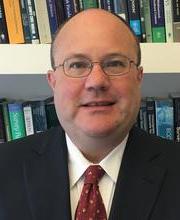
Capturing Voter Intent: What Polling Error Teaches Us About Electoral Trends
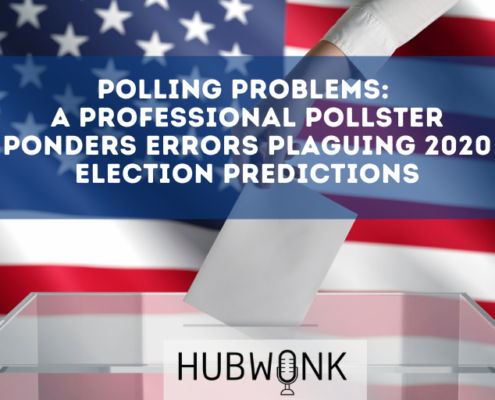
Polling Problems: A Professional Pollster Ponders Errors Plaguing 2020 Election Predictions
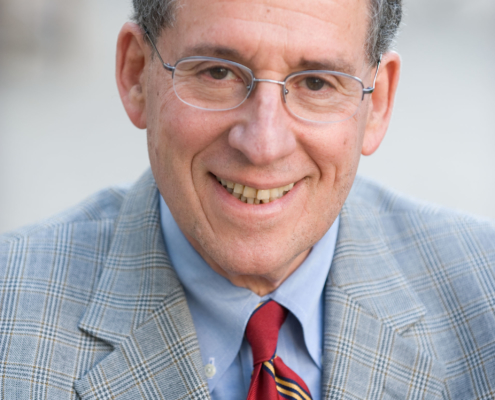
Voting for Health: Party Opinions, Election Results & the Healthcare Policy Implications of Election 2020

Staving Off Disaster: Lessons from Covid Applied to the Epic Battle Against Drug Resistant Microbes
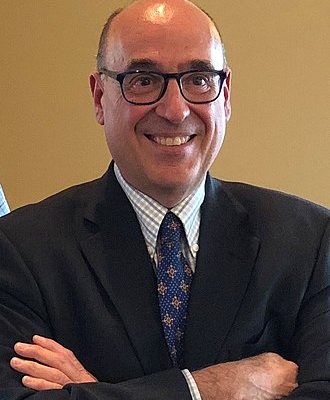
Clearing Boston’s Throat: What the I-90 Allston Project Portends for Metro West Commuters
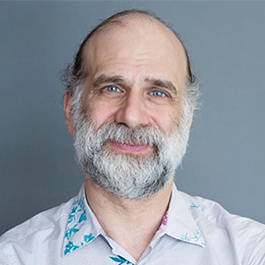
Ballot Question 1: Risks & Regulations Regarding Right to Repair

Small Business Life Support: Policy Relief for Firms Sickened by COVID?




